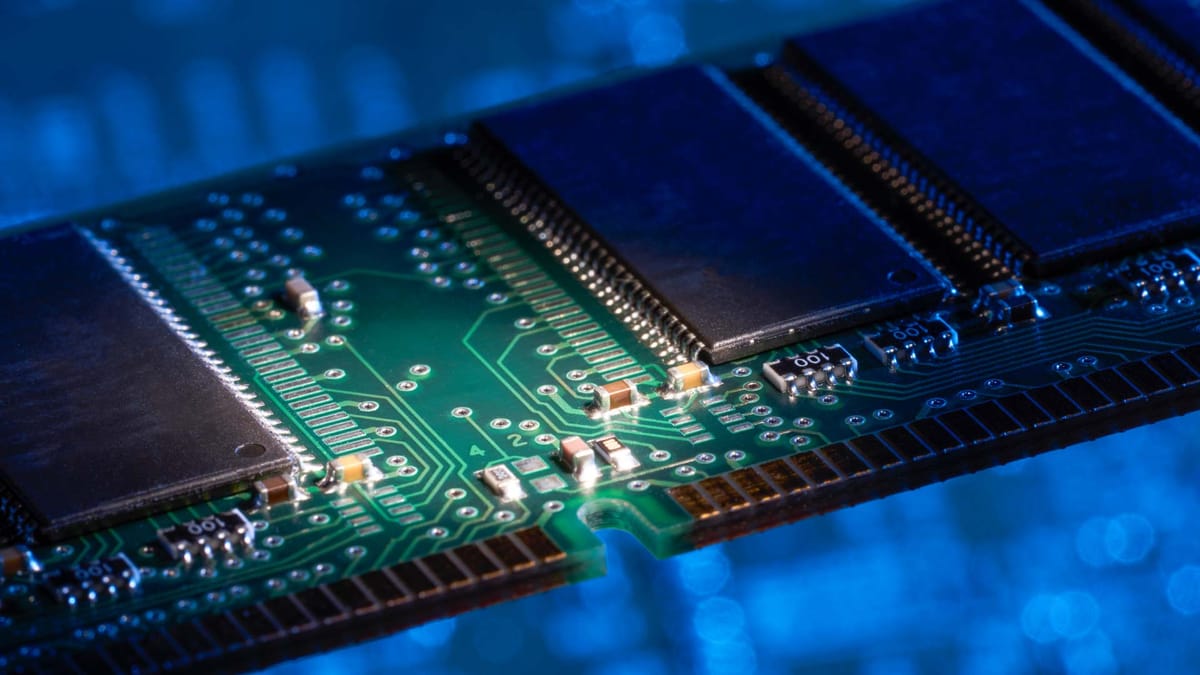RAM Explained Like You’re 5: What It Does and Why It Matters

What Exactly Is RAM?
I’m sure you’ve heard people say things like, “Chrome’s eating up your RAM, no wonder it’s so slow,” or “Your computer has <this amount> of RAM,” but what exactly is RAM—and why is everyone so obsessed with it?
What Does RAM Stand For?
RAM stands for Random Access Memory. It’s a type of short-term memory your computer uses to temporarily store data that’s actively being used. This includes applications you’ve opened, browser tabs, documents you’re editing, and even background processes.
If you press Ctrl + Shift + Esc (on Windows), you’ll open Task Manager, where you can check how much RAM is being used under the Memory section and which applications are using the most.
There are two main types of RAM:
- DRAM (Dynamic RAM) – This is what most people are referring to when they say “RAM.”
- SRAM (Static RAM) – This is faster, smaller, and used primarily for CPU cache, not as your main memory. We won’t go too deep into SRAM here.
RAM Is Temporary and Volatile
RAM is a volatile form of memory, meaning it only holds data while your device is powered on. The moment you shut down or lose power, anything stored in RAM is erased. That’s why if you forget to save a document before your computer crashes, it’s gone—the data never made it to permanent storage like your SSD or HDD.
RAM allows your CPU to access data quickly, much faster than if it had to pull that information from your long-term storage drive.
Analogy: RAM Is Like Your Desk
Think of RAM like your desk when working on a project. You place your tools, papers, and notes on the desk while you’re actively using them. The more RAM (desk space) you have, the more you can keep out in front of you without needing to constantly reach into your drawer (your hard drive) to fetch more.
What Actually Uses RAM?
Everything from opening a browser tab, to playing a game, to running an antivirus in the background uses RAM.
For example:
- Browser tabs are stored in RAM so they load instantly when you switch to them.
- Games use RAM to load maps, textures, and in-game data while you play.
- Applications like Word or Photoshop use RAM to store what you’re currently doing so you can work in real time.
The more applications and tabs you have open, the more RAM you need. If you don’t have enough, your computer will start to slow down—or worse.
What Happens When You Run Out of RAM?
1. Your System Uses Virtual Memory
When your RAM fills up, your computer starts using a portion of your SSD or HDD as “backup” memory, called virtual memory or swap space.
- It’s like when your desk is full, and you start placing files on the floor.
- This swap space is much slower than actual RAM.
2. Your Computer Slows Down
- Programs will feel sluggish.
- Switching between apps or browser tabs takes longer.
- You’ll notice delays in opening or saving files.
3. Programs May Crash
If both your RAM and virtual memory are full, your computer may:
- Freeze or crash
- Show “Out of memory” errors
- Force applications to close without saving
4. Increased Battery Drain (on Laptops)
When your system uses virtual memory heavily, it increases disk activity, which drains your battery faster—especially if you’re using a hard drive instead of an SSD.
How Much RAM Do You Really Need?
Here’s a quick breakdown based on usage:
| Use Case | Recommended RAM |
|---|---|
| Basic tasks (web, email, Office) | 4GB – 8GB |
| Gaming, programming, graphic design | 16GB – 32GB |
| Heavy-duty work (video editing, 3D) | 32GB or more |
While more RAM is always better, these numbers give you a good idea of what’s “enough” for different types of users.